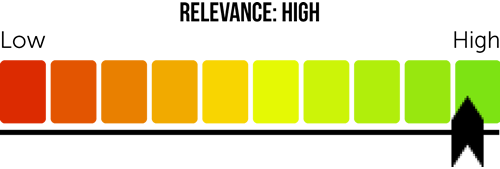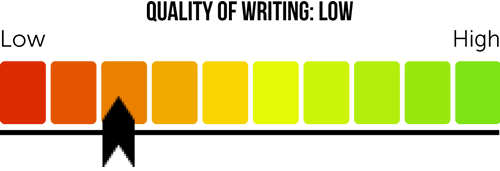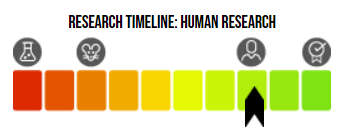Stay up to date on research and information
Sign Up for FORCE NewslettersAbout the XRAY Program & Ratings
Why we developed this program
People need accurate, relevant information about cancer in order to make informed decisions about their health. FORCE frequently learns of situations where media reports on cancer research are inaccurate or misleading. FORCE developed “eXamining the Relevance of Articles for You” (XRAY) to provide a reliable way for people to understand cancer information covered by the media. With initial funding from the Centers for Disease Control and Prevention (CDC), we developed a program to review breast cancer topics reported in the media. XRAY is part of FORCE's efforts to improve health literacy related to cancer.
XRAY review process
The XRAY content is produced by the FORCE Education Team which includes: Executive Director, Sue Friedman, DVM, Vice President of Education, Piri Welcsh, PhD, and Director of Education and Research, Kelly Owens, PhD.
Our XRAY Team chooses media articles submitted by our users, new or practice-changing research, and articles that have received significant attention, stimulated discussion, or generated confusion in the patient community. Drs. Welcsh and Owens read the scientific journal article on which the media story was based. They compare what was found in the original research and what the media article reported. Drs. Owens and Welcsh write up a summary on the original research findings and use our rating scale to rate the relevance of the research, the strength of the science and the accuracy of the media articles that covered the research (see below).
Every summary is reviewed and approved by a member of the FORCE Scientific Advisory Board, which consists of active researchers and clinicians in the fields of cancer, genetics, surgery, behavioral health, public policy, survivorship and health equity.
Rating Scale Information for Reviews
Each XRAY review uses a series of meters to help users understand how the science affects their medical decisions and clinical care. XRAY articles are scored on each of the following categories:
- Relevance
- Scientific Strength
- Quality of Writing
- Research Cycle
Relevance is rated on a scale of 1-12 based on the criteria below. Points are converted to a percentage, which is reflected by a meter scale ranging from low to high.

- Topic: (0-2 points)
- Organism: (0 to 2 points)
- Clinical Utility: (0 to 2 points)
- Generalizability (0 to 2 points)
- Timeline to clinical relevance (0 to 4 points)
Scientific Strength is rated on a scale of 1-14 based on the criteria below. Points are converted to a percentage, which is reflected by a meter scale ranging from low to high.

- Research Design: (0 - 4 points)
- Analysis of study (0 - 7 points)
- Research context (0-1 point)
Quality of Writing is rated on a scale of 1-15 based on the criteria below. Points are converted to a percentage, which is reflected by a meter scale ranging from low to high.

- Depiction of Topic (0-4 points)
- Execution of Article (0-6 points)
- Factual Emphasis (0-5 points)
Research Timeline reflects the progress of the science on the research timeline.

- Lab Research
- Animal Research
- Human Research
- Post Approval
Rating Scale Information for Media Coverage of Research
Media articles are rated on a 5-star rating scale.
To assign a media article rating, XRAY looks at whether the writing is accurate:
- Did the headline match what the article claims?
- Did the article avoid exaggerating the research?
- Did the article take into account conflicting research?
XRAY also takes into account how well the article was executed:
- Did the story cite strong sources or experts in the field?
- Is the writing clear and easy to understand?
Finally, the rating looks at how scientifically accurate the media report is:
- Is the reporting factually correct?
- Was scientific terminology used correctly and explained well?
- Was the research covered in the story critically evaluated?
- Were all the statistics presented correct and not misleading?
Any part of a story that does not meet these criteria results in lost star rating points.
Presentations and Papers
FORCE has presented XRAY program results at national conferences and published articles in peer-reviewed journals. The following include recent publications:
Pugh Yi R; Welcsh P; Owens K; Rose D; Dearfield C; Kuhn E; Friedman S. People with metastatic breast cancer face barriers to finding information and support. Presented at the San Antonio Breast Cancer Symposium - December 9, 2022.
Pugh Yi RH, Rezende L, Dearfield CT, Welcsh P, and Friedman SJ. Results of a pilot test of effects of an online resource on lay audience understanding of media reports on breast cancer research. Health Education Journal. April 2019
Pugh-Yi RH, Rezende, Dearfield CT, Owens KN, Welcsh PL, Friedman SJ. Effects of online resource to support laypersons’ understanding of media reports on breast cancer research. Dec. 8, 2018. San Antonio Breast Cancer Symposium Abstract, P6-14-08.
American Public Health Association National Meeting, November 2015: Development, Implementation, and Evaluation of the eXamining Relevance of Articles to Young Survivors (XRAYS) Program to Summarize Recent Research Findings for Young Breast Cancer Survivors: Findings from the First Year.
Visit our Publications page to view additional publications and presentations related to the XRAY program and FORCE's health literacy efforts.
Thank You to Our Partners and Funders
We are thankful for the efforts of our steering committees and our many partners for helping us establish, improve and share the XRAY program and reviews.
Program development and continued support have been provided through cooperative agreements funded by the Centers for Disease Control and Prevention (NU58DP006677 and DP005404). Thanks to generous support from Novartis, FORCE refined the XRAYS platform and process to focus on information and articles relevant to men and women living with metastatic breast cancer. Current supporters of the XRAY program include: AstraZeneca, GSK, J&J Healthcare and Merck.
XRAY contents are solely the responsibility of FORCE and do not necessarily represent the official views of the Centers for Disease Control and Prevention or the Department of Health and Human Services or any other partners or supporters of the program.